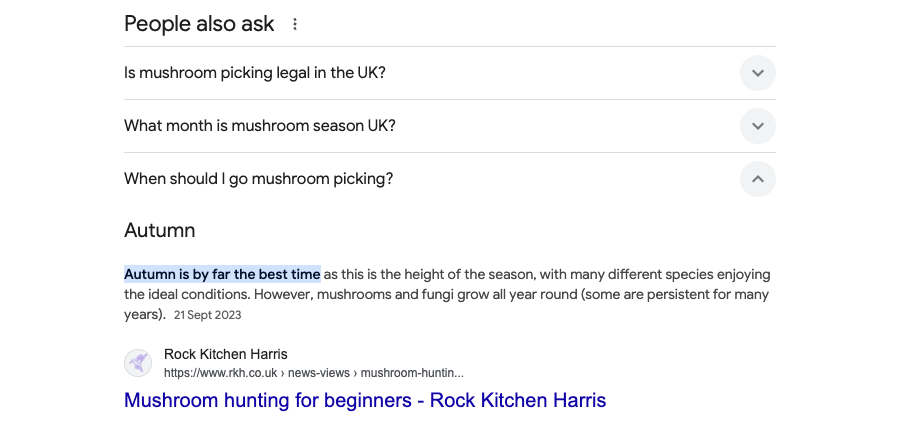Local SEO's advantages over AI search

While AI summaries and overviews are becoming more prominent in our search results, you'd be m…

Good content is a cornerstone of brand authority and it can play a key role in helping your brand rank highly in the search engine results pages (SERPs). There are plenty of factors that influence your content’s - and your brand’s - SERPs ranking, and it’s not just about the quality of information and choosing the right keywords. In this blog, we’re going to look at some of the most common myths around content and explain how to create an effective piece.
It can be easy to fall into the trap of thinking "longer piece = more information = better content” but this isn’t always the case. A good piece of content needs to be engaging as well as informative - while there’s always an audience who want to read thousands of words on a subject, you should try and be as concise as possible when writing. If you’re struggling to keep your content length down, you can use tools such as Grammarly to help identify where you can simplify your content. A good piece of content typically consists of at least 300 words to provide substantial value to your audience.
Plan out the key points of an article before you start: if you use a copywriter, make sure to brief them on what must be included, so they know what to focus on. A more refined approach will help to get the information across quicker, without impacting the quality of the piece.
Briefing your copywriter properly is a must for a number of reasons. Firstly, it helps the copywriter create better content, and secondly, it removes ambiguity and confusion, which means the copywriter can get started quicker.
For SEO purposes, make sure to include things like relevant keywords to use, headings that are required, and any URLs that should be incorporated into the piece. A general outline of the intended structure will help the copywriter drill down into the purpose of the article, too.
To read our detailed guide to briefing your copywriter, click here.
Stuffing your content with keywords won’t magically improve your search rankings. Search engines prioritise original, helpful content over keyword-stuffed text. Instead of focusing on a long list of keywords, pick two or three important ones and use them naturally in your headings, titles, and paragraphs.
Overusing keywords can actually harm your site’s reputation and make it look spammy. Remember, search engines are smart and can easily spot tricks like this. For example, our own John Harris’s blog about mushroom hunting ranks particularly well for keywords such as ‘mushroom picking uk’. This is because John created a piece of content that audiences really want to read. It answers multiple questions and provides guidance. While John’s blog post doesn’t directly align with our agency’s overall focus, John’s blog is part of our dive into RKH and the people who work here. It also serves as a great example of how creating quality content can drive traffic and improve rankings.

As we mentioned earlier, search engines prioritise original, helpful content. This means your content should directly relate to your target audience. For example, if you run an online shoe shop, writing a blog about the fastest cars under £10,000 is unlikely to interest your customers. It will confuse them and search engines will struggle to connect your shoe shop with fast cars.
Instead, focus on creating content that helps your customers. For a shoe shop, a blog post on how to measure your feet would be much more relevant and useful to your audience.
Obviously, the main content of your blog post or web page needs to be informative, well-written and original, but if there’s something that often goes undervalued, it’s headings and subheadings.
Using informative H2s and H3s helps to break your page up, which is useful for multiple reasons. Breaking up the content with relevant headers makes it easier for readers to navigate and digest what they’re reading. Improving readability like this goes down well with search engines, as it improves user experience.
H1s, H2s, and H3s are useful for accessibility, too. For people who have difficulty reading large amounts of text, headers are crucial signposts that will help them scan the page and find what they need quickly.
With the rise of generative AI, there’s been a lot of talk around whether using AI tools is a bad thing. Using AI tools to create content isn’t inherently bad, but what we recommend is to make sure you’re using the AI tools as an assistant, rather than a full replacement for a copywriter or content writer. These tools should be used sensibly.
What we mean by this is that generative AI can provide a great basis for content, but the content itself should be written by a human. This means double-checking any facts and stats that the AI tool has written, as well as ensuring the content is unique and relevant. By combining AI tools and human creativity, you can create high quality content.
Creating effective content is essential when it comes to building brand authority and trust as well as improving search engine rankings. There are many factors to consider, but it’s crucial you focus on quality, relevance and a clear understanding of your target audience.
A few things to remember; longform content isn’t always better, keyword stuffing can harm a website’s reputation (as well as rankings), and you should use AI tools responsibly.
By planning carefully, doing your research, briefing your copywriter, and using AI tools as an assistant, you can create content that not only resonates and builds trust with your audience, but also ranks well and drives traffic to your website.